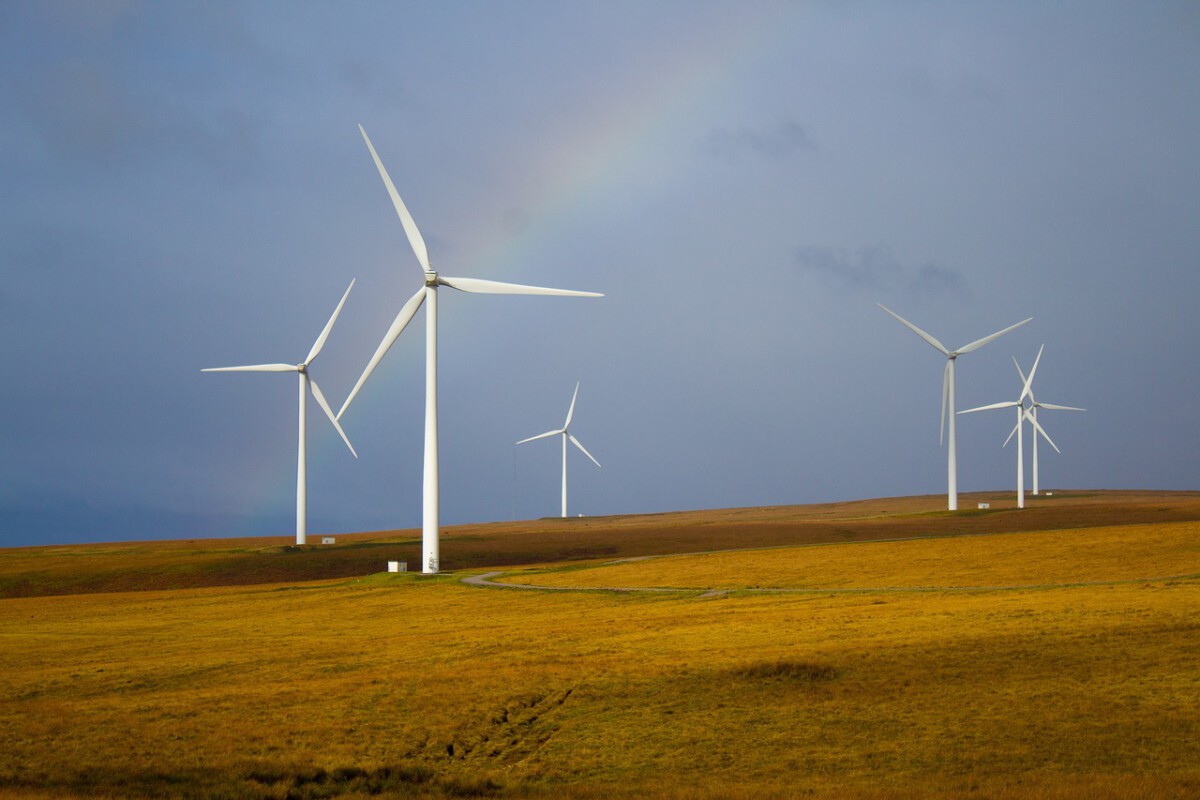The Sunshine State Blazes New Trails in 100% Renewable Power

What if I told you that California achieved 100% renewable electricity for parts of 132 days in 2024, including 98 consecutive days where wind, solar, hydro, and geothermal exceeded demand for multiple hours daily? This isn’t science fiction anymore – it’s happening right now in America’s fifth-largest economy. While natural gas still accounts for 36% of California’s electricity mix, more than half now comes from solar, wind, and other clean sources. Solar power increased by 31% and battery storage doubled in 2024, proving that the Golden State isn’t just dreaming about clean energy – it’s living it. Solar provides 28% of California’s total electricity generation when including small-scale systems, with nearly 20,000 megawatts of utility-scale solar capacity. The most stunning achievement? Solar alone exceeded 100% of demand for 1.5 hours on April 11, then smashed that record on April 21 when it peaked at 123.9% of demand.
Texas Goes Big With Wind and Solar Dominance

Texas is dominating renewable energy development with nearly 80% more combined solar, wind and battery capacity than the next largest state. The numbers are absolutely staggering when you break them down. Texas generated 169,442 gigawatt-hours from wind and solar in 2024, significantly more than runner-up California’s 92,316 gigawatt-hours. Texas led the nation in wind generation, producing nearly three-tenths of America’s total wind power. Since 2019, Texas boosted solar capacity by 800%, wind by 50%, and battery storage by an eye-popping 5,500%, installing around 19,000 MW of solar, 14,000 MW of wind and 6,200 MW of battery capacity. In 2024, Texas produced 34% of its electricity from wind and solar power, compared to just 12% in 2015. What makes this even more remarkable is that Texas has its own electricity grid with a competitive market where power plants compete on price, plus friendly permitting processes.
Iowa Sets the Global Standard for Wind Power Excellence

Here’s something that’ll blow your mind: Denmark led the world with 67% renewable electricity in 2023, but Iowa ranked second globally and South Dakota third. Iowa generated an impressive 62% of its electricity from wind power – the highest percentage of any American state. The Hawkeye State has over 12,200 megawatts of installed capacity through more than 6,000 wind turbines, with new projects expected to boost capacity to over 14,700 MW by late 2024. Iowa enacted America’s first renewable portfolio standard in 1983, and its wind power production has more than doubled over the past decade. Iowa produced 46,823 thousand megawatt hours using renewable sources, making up 65% of its total electricity and ranking first nationally. The transformation happened fast too – solar capacity increased over two times between 2020 and 2024, with renewables now producing enough electricity to meet 83% of the state’s demand.
South Dakota Achieves Record-Breaking Renewable Milestones

South Dakota generated the highest percentage of state electricity sales from renewable energy in 2024 at 92%, representing a big jump from 70% the previous year. This small state punches way above its weight in the clean energy revolution. South Dakota led all states by producing the equivalent of 92% of its retail electricity from wind, solar or geothermal. Iowa and South Dakota both generated over 40% of their electricity from land-based wind power, but South Dakota’s overall renewable percentage is even higher. South Dakota went 63% for Trump in the latest election, yet almost 56% of its electricity in 2023 was generated by wind turbines. Iowa and South Dakota surpassed 60% clean energy for the first time in 2024. The state proves that political affiliation doesn’t determine clean energy success – economic sense does.
Kansas Harnesses Prairie Winds for Energy Independence

Kansas produces enough renewable energy to meet 74% of the state’s retail electricity sales, with solar potential at 378 times its 2020 electricity consumption. Positioned in America’s wind corridor, Kansas has made wind power the largest source of electricity generation in the state, surpassing coal for the first time in 2019. Kansas produced 30,452 thousand megawatt hours using renewable sources, making up 50.6% of its total electricity and ranking fourth nationally. Kansas ranks fourth in the nation for wind capacity with 9,043 MW, trailing only Texas, Iowa, and Oklahoma. Wind accounts for more than one-third of the electricity mix in Kansas, with the state reaching 46% of all in-state electricity from wind and solar combined. The Sunflower State demonstrates how rural America can become an energy powerhouse through smart renewable investments.
Oklahoma Transforms From Oil to Wind Energy Leadership

Oklahoma has emerged as a powerhouse in wind energy production, ranking as the third-largest wind electricity producer in the nation with wind now accounting for 44% of the state’s total electricity generation. Over 54% of Oklahoma’s electricity came from renewable sources in 2024, with wind power singlehandedly outpacing power production from fossil fuels. Oklahoma ranks third nationally in wind capacity with 12,245 MW. Major industry players including American Electric Power, NextEra, and Enel Green Power North America have established significant operations across Oklahoma, with wind turbines providing additional income streams for landowners through lease payments. Oklahoma is one of four states getting more than 30% of electricity production from wind, and voted for Trump in 2016 while being represented by Republicans. The state proves that energy diversification makes economic sense regardless of political ideology.
Nevada Pioneers Utility-Scale Solar Innovation

Nevada is among the states where utility-scale solar comprises a significant portion of the electricity mix, contributing 23% of the state’s electricity in 2023. Nevada produced 17,466 thousand megawatt hours using renewable sources, making up 38.6% of its total electricity and ranking ninth nationally. Nevada surpassed 30% annual share of solar in its electricity mix for the first time in 2024. Nevada’s solar capacity is projected to increase significantly with the Gemini solar facility adding 690 MW of solar capacity and 380 MW of battery storage. Nevada has one of the largest battery storage networks among lower-tier states at around 1,125 MW, allowing utilities to store surplus solar power for later distribution. Nevada is one of only four states producing solar, wind, hydroelectric, and geothermal energy. The Silver State shows how desert conditions can become a renewable energy goldmine.
Illinois Breaks New Ground in Clean Energy Transition

Illinois became the latest state to join the ranks where wind and solar have overtaken coal in 2024, following Arizona, Colorado, Florida and Maryland in 2023. Illinois produced 28,879 thousand megawatt hours using renewable sources, making up 15.3% of its total electricity and ranking 22nd, with a goal of 100% renewable energy by 2050. Illinois ranks fifth nationally in wind capacity with 7,874 MW. Illinois was among the five states with the most electricity generation from wind in 2023. Illinois has the most nuclear capacity of any state, providing a solid foundation of carbon-free baseload power. The Prairie State proves that industrial Midwest states can successfully transition away from coal without sacrificing economic competitiveness.
New Mexico Excels in Desert Renewable Resources

New Mexico produced 20,086 thousand megawatt hours using renewable sources, making up 52% of its total electricity and ranking third nationally, with a goal of 100% carbon-free electricity by 2045. Wind accounts for more than one-third of New Mexico’s electricity mix, with the state reaching 45% of all in-state electricity from wind and solar combined. New Mexico is among the U.S. states that were global leaders in renewable energy, covering the full political spectrum. New Mexico rounds out the top clean energy producers alongside other red and blue states. The Land of Enchantment demonstrates how southwestern states can leverage abundant sun and wind resources to achieve remarkable renewable energy percentages. New Mexico is among the next largest states in terms of combined grid-scale renewables generation and battery storage capacity, with roughly 7,500-8,300 MW of combined solar, wind and battery capacity.
Washington State Powers Forward With Hydroelectric Heritage

Washington State brings a unique perspective to America’s clean energy leadership through its massive hydroelectric infrastructure and growing renewable portfolio. Washington is the nation’s largest conventional hydroelectric power producer, ahead of California. While the Evergreen State may not appear in the top rankings for wind and solar specifically, it represents a different model of clean energy success. Washington saw the greatest increase in EV market share year over year, with a 7.6% increase in September 2023. The West Coast dominated EV purchases, with Washington playing a key role. Washington doesn’t appear among the four states producing all types of renewable energy, but its hydroelectric dominance provides a foundation for expanding wind and solar capacity. The state shows how existing clean infrastructure can support further renewable growth.
Oregon Balances Multiple Renewable Energy Sources

Oregon produced 12,734 thousand megawatt hours using renewable sources, making up 20.1% of its total electricity and ranking 19th, with a goal to reduce greenhouse gas emissions 100% below baseline by 2040. Oregon ranks second nationally with roughly 75% of electricity production capacity from clean sources. Oregon is one of only four states producing solar, wind, hydroelectric, and geothermal energy. While Oregon’s renewable percentage might seem modest compared to wind-powered states, its diversified clean energy portfolio provides exceptional grid stability. The state combines significant hydroelectric capacity with growing solar and wind installations, creating a resilient energy mix. Oregon’s approach demonstrates that renewable energy success isn’t just about one technology – it’s about smart integration of multiple clean sources. The Pacific Northwest state proves that environmental leadership translates into practical energy solutions.
Florida Emerges as Unexpected Solar Powerhouse

Florida has the third-largest footprint of renewables and battery capacity but has no wind power, trailing top states with a combined 11,500 MW of solar, wind and battery capacity, though the state boosted its solar footprint from less than 50 MW in 2019 to over 10,500 MW in 2024. Florida generated some of the most electricity from solar in 2024 and had the largest growth in combined solar and wind generation. Southeast states including Florida got nearly 27 times as much electricity from solar in 2024 as in 2015, producing enough electricity to power more than 5.5 million average U.S. households. Florida was among the states where wind and solar overtook coal in 2023. Florida led alongside Texas and California in utility-scale and distributed solar capacity additions in 2024. The Sunshine State shows that even without significant wind resources, strategic solar investments can achieve impressive renewable energy growth.
America’s Clean Energy Future Takes Shape Across Red and Blue States

The United States produced more than three times as much solar, wind and geothermal power in 2024 as in 2015, with wind, solar and geothermal accounting for 19% of national retail electricity sales, up from 7% in 2015. In 2024, all carbon-free electricity sources supplied nearly 44% of electricity, while renewables supplied nearly 25%. Red districts receive nearly four times as much investment from the Inflation Reduction Act’s financial incentives as blue districts, proving that Republican politicians may call climate change a hoax but won’t lose votes by attracting billions of dollars to their districts. The economics of clean energy help explain why it’s thriving in places where it would seem unwelcome – states like Iowa and Texas have windswept prairie and sunshine that can be converted into energy more cheaply than building new coal plants. Polling shows consistent public support for renewables across both Democratic and Republican demographics, with 78% of adults favoring more solar power and 72% supporting more wind. The clean energy revolution proves that when economics and common sense align, political divisions become irrelevant.
The numbers don’t lie, and they tell a story that should make every American proud. From California’s record-breaking solar achievements to Iowa’s wind-powered dominance, from Texas’s massive renewable buildout to South Dakota’s 92% clean energy milestone, states across the political spectrum are proving that America’s clean energy future isn’t just possible – it’s happening right now. Who would have thought that some of our most conservative states would become global leaders in renewable energy?








